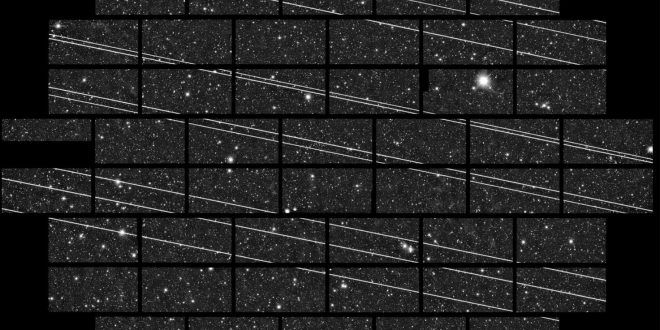As low Earth orbit crowds, Starlink satellites are making thousands of avoidance maneuvers, raising concerns of a catastrophic impact.
SpaceX told the FCC in a recent filing that its orbital communication satellites maneuvered over 25,000 times between December 1, 2022, and May 21, 2023. The company said its maneuvering threshold is “an order of magnitude” higher than industry standard. NASA and other industry firms use a threshold of 1 in 10,000, while SpaceX uses 1 in 100,000.
However, Starlink satellites avoided twice as many in the previous reporting period. Collision avoidance moves grow with Starlink: SpaceX recently launched 457 satellites.
Over 1,300 of the 25,000 maneuvers avoided debris from Russia’s November 2021 anti-satellite weapon demonstration. The filing stated that Starlink satellites were most at risk from that test’s 9% remaining debris.
SpaceX is not the only company planning an orbital megaconstellation. Even if some projects fail, tens of thousands more objects will be in space by the end of the decade.
A study in Astronomy & Astrophysics found that Starlink satellites emitted “unintended electromagnetic radiation” that could affect astronomical research just days after SpaceX filed its report. The study detected radiation from 68 Starlink satellites using a sensitive Low Frequency Array telescope. This differs from communications satellite signals astronomers have faced.
The radiation compounded in satellite constellation simulations.
“Our simulations show that the larger the constellation, the more important this effect becomes as the radiation from all the satellites adds up,” said study co-author Benjamin Winkel from Germany’s Max Planck Institute for Radio Astronomy. “This makes us worried not only about the existing constellations but even more about the planned ones—and also about the lack of clear regulation that protects the radio astronomy bands from unintended radiation.”
Federico Di Vruno, co-director of the International Astronomical Union Centre for the Protection of the Dark and Quiet Sky, led the study. The IAU has been vocal about how satellite constellations may affect astronomy. The authors are “in close contact” with SpaceX, which has already changed the next generation of Starlink satellites to reduce these emissions, according to a press release.
 Tech Gadget Central Latest Tech News and Reviews
Tech Gadget Central Latest Tech News and Reviews




